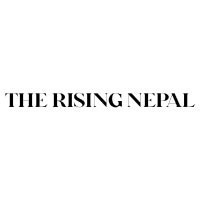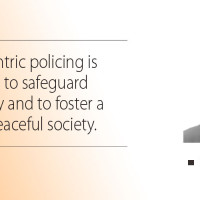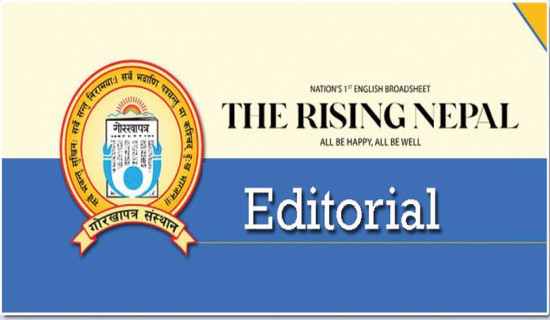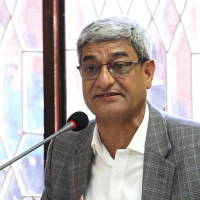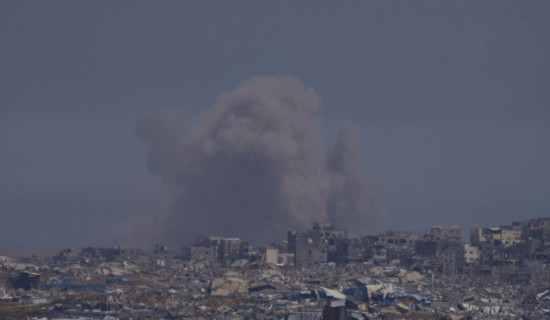- Thursday, 8 May 2025
Double Whammy Of Air Pollution, Heat
The Kathmandu Valley has recently been shrouded in a gloomy atmosphere, with air pollution reaching its worst level. At the same time last year, wildfires were raging across forests in Nepal, and their impact was being felt most severely in the Kathmandu Valley. On March 31, 2025, the Valley was ranked the most polluted city in the world. On that day, PM2.5 levels soared to 365 micrograms per cubic meter — classified as hazardous. PM stands for particulate matter, also known as particle pollution. It refers to a mixture of solid particles and liquid droplets in the air.
While larger particles like dust, dirt, soot, or smoke can be seen with the naked eye, smaller ones are so fine they can only be detected using electronic microscopes. These tiny particles can be inhaled deeply into the lungs and even enter the bloodstream, posing serious health risks. According to the United States Environmental Protection Agency (EPA), particles smaller than 2.5 micrometres (PM2.5) pose the greatest health risk. Due to their size, PM2.5 particles remain suspended in the air for long periods, increasing the likelihood of being inhaled. Nearby Lalitpur recorded 333 micrograms. While the levels varied across the Valley, every area exceeded 200 micrograms per cubic meter.
Serious health risk
Based on the EPA’s Air Quality Index, air quality readings between 151 and 200 are considered unhealthy, and everyone breathing that air may experience health problems. Vulnerable groups, including children, the elderly, and those with pre-existing health conditions, are likely to face more severe effects. When air quality reaches 201–300, it is categorised as very unhealthy, with increased health risks for everyone. Levels above 300 are considered hazardous and pose a serious threat to public health.
This is the situation currently unfolding in and around the Kathmandu Valley, with residents experiencing the effects in their daily lives. A recent research report, 'Synergistic Association of Ambient Air Pollution and Heat on Daily Mortality in India' by the Institute of Environmental Medicine at the Karolinska Institute in Sweden, highlights the deadly combination of high temperatures and air pollution. According to the study, the risk of death increases significantly when both pollution and heat rise. The report, based on research conducted in India, also notes an increase in the spread of viral illnesses such as influenza, pneumonia, persistent coughs, and viral fevers under such conditions, as corroborated by medical professionals.
The Swedish institute points out that research on the interaction between air pollution and heat has been limited, especially in India, where both often reach extreme levels. Their study analysed data from 10 major Indian cities between 2008 and 2019, encompassing approximately 3.6 million deaths. Using advanced technology, researchers estimated daily exposure to both ambient air pollution and temperature. They found that the link between PM2.5 levels and mortality was especially strong on extremely hot days. Specifically, a 10 microgram per cubic meter increase in PM2.5 was associated with a 4.6 per cent rise in daily deaths on such days — much higher than the 0.8 per cent increase on typical warm days.
Moreover, the risk of death increased by 8.3 percent when temperatures shifted from warm to extremely hot at a pollution level of 20 micrograms per cubic meter and surged by 64 per cent when PM2.5 levels hit 100 micrograms per cubic meter. These alarming findings underline the dangerous synergy between heat and air pollution, emphasising that their combined effects on health are far more harmful than each factor alone. While this study focused on India, its implications are highly relevant to other South Asian countries, including Nepal and Bangladesh.
In Nepal, summer temperatures have been steadily rising due to climate change. Long-time residents of the Kathmandu Valley can attest to how much the climate has changed since the 1970s. Cold winter days are diminishing, while the intensity and duration of summer heat are increasing. Although similar research has not yet been conducted in Nepal, the findings from India offer valuable insights and should serve as a wake-up call for policymakers, medical professionals, and the general public.
Unfortunately, most people are unaware of what PM2.5 is or why the skies have recently turned yellow instead of bright on sunny afternoons. It is vital to raise public awareness about environmental changes and their health impacts. The Swedish study recommends the development of integrated surveillance and early warning systems that consider both climate hazards and pollution levels as an essential adaptation strategy. Residents of most South Asian countries are accustomed to going out for morning and evening walks. In recent days, public interest notices have been issued by government authorities advising people to limit such activities due to rising levels of air pollution.
Public awareness
However, these notices often lack clear explanations, and the reasons behind the warnings rarely reach the general public in an accessible way. It is, therefore, crucial to raise awareness about the rising levels of air pollutants, their correlation with heat, and the steps people can take to protect themselves. For those staying indoors, it is important to remain inside but in well-ventilated spaces to avoid both heat buildup and exposure to indoor pollutants.
However, daily wage earners, labourers, and office workers often do not have the luxury of staying indoors or avoiding exposure. For them, options to protect themselves from both heat and pollution are limited. Governments and private employers must take responsibility by ensuring that workplaces are properly ventilated. Additionally, during peak heat days, flexible work hours or off-hours should be considered to safeguard workers’ health. However, the first step should be to create massive awareness among the general public on the correlation between heat and air pollution.
(Sharma is a senior journalist and rights advocate. namrata1964@yahoo.com X handle: NamrataSharmaP)


